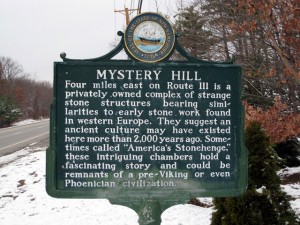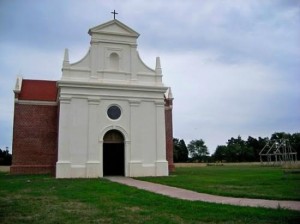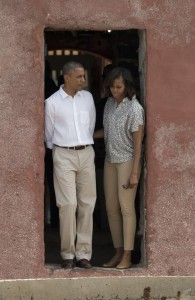I recently posted on Philip K. Dick’s book The Man in the High Castle, and what it suggests about the construction of historical memory. For historians of religion especially, we can learn a lot about the invention of history, and how new histories, new memories, come to be seen as solid fact.
The godfather of the modern study of memory was French historian Pierre Nora, who claims that we are living through a kind of golden age of historical invention. Already in the 1980s, he wrote that
We are witnessing a world-wide upsurge in memory. Over the last twenty or twenty-five years, every country, every social, ethnic or family group, has undergone a profound change in the relationship it traditionally enjoyed with the past…. these trends together make up a kind of tidal wave of memorial concerns that has broken over the world, everywhere establishing close ties between respect for the past – whether real or imaginary – and the sense of belonging, collective consciousness and individual self-awareness, memory and identity.
Now the idea of an “upsurge” of memory, a “tidal wave”, is interesting and powerful. Nora attributes the growth of new memories and histories to specifically French conditions and politics, but we can see very much the same thing in Britain and the US. Major scholars who published on all this included Simon Schama, John Bodnar, Michael Kammen, and Raphael Samuel. A related work on this theme was The Invention Of Tradition (1983), which explains how customs are invented, and then acquire a life of their own as they become “authentic” ancient traditions.
One theme running through these discussions is the uses of the past, how memories are cultivated or invented to serve particular constituencies or interest groups, which change over time.
But are these new memories “true”? I’m fascinated by manufactured histories, and the places built around them. Some years ago, I visited an intriguing tourist site called America’s Stonehenge (formerly Mystery Hill) in New Hampshire, which claims to be the home of early Phoenician/Megalithic European settlers. “A maze of man-made chambers, walls and ceremonial meeting places, America’s Stonehenge is most likely the oldest man-made construction in the United States (over 4000 years old).” Presumably, the owners present this view with absolute sincerity. Obviously, though, I don’t believe it’s any such thing, and you would be hard pressed to find a reputable academic archaeologist who takes that interpretation seriously. Although it certainly contains some Native American materials, the site as it stands was basically developed in the 1920s around some colonial root cellars. But at no point is any skepticism allowed. The whole elaborate place is laid out with all the archaeological guides and markers that you would expect if it was a National Park, with a respectable-looking range of academic books in the store.
Then on the same day I went to Portsmouth, New Hampshire, where – well, where history has also changed totally in the past thirty years, with the discovery and invention of whole alternative histories, all apparently just as well documented, but in this case, totally respectable. In this instance, the shift is the discovery and highlighting of alleged African-American histories in the town, which have now been placed in the foreground of historical memory. The associations are genuine, but the status they are given is wholly new. Incidentally, expect that over the coming decades, throughout the country, any associations with gay history will be upgraded similarly.
To take another example, ever since I arrived in the US in 1980, I have enjoyed my periodic visits to St Mary’s City, Maryland, which genuinely was the old colonial capital, and a truly important center. Just in my time, though, the material remains have undergoue a revolutionary transformation, from a field to a complex of restored but thoroughly ancient looking buildings. Now, that’s completely different from America’s Stonehenge because… well, because for one thing, the reconstructed and reimagined buildings were designed by people with more recent Ph D’s from good universities, and I’m sure there are lots of other reasons why the new St. Mary’s is not simply an academic Disneyland. The analogy of Williamsburg comes to mind, as does Florida’s St. Augustine, and so do countless historical sites in Britain, all vastly improved and developed by the “heritage industry” (a great phrase). In all these cases, there is vastly more history on the ground than there was fifty or a hundred years ago. Come back in a few decades, and there’ll be much more.
We like to locate our history in recognizable places, which symbolize abstract trends. Various US Presidents, for instance, have made the pilgrimage to Gorée Island in Senegal, supposedly the epicenter of the slave trade, from which countless thousands of hapless Africans were transported to the New World, passing through a still extant Door of No Return. The reality of the trade is not in doubt, but you’ll find precious few scholars who think that Gorée had much to do with it, or that the “Door” was anything but a garbage disposal.
Please understand, these comments are not critical, and St. Mary’s (for instance) is a gorgeous place to visit, and richly educational. So is Gorée. But these stories do raise questions about how people imagine and reimagine history. Think for instance about how, in recent decades, great sites like Mount Vernon and Monticello have been reinterpreted to pay far more attention to the fact of slavery. History changes, as does memory. As they used to say in the old Soviet Union, the future is quite fixed, but the past changes day by day.
We always claim that our view is real history, while yours is bogus and invented. But are all such histories constructed, with varying degrees of plausibility?
All of which raises further questions about how people understand historical authenticity. Some postmodern historians debate whether historical claims should be seen as Onion or Olive. Historians have the task of stripping away the outside layers of meaning, but when they have finished, are you left with the core, like the stone of an olive; or with nothing but a curious smell, as when you are finished deconstructing an onion?
In a future post, I’ll explore some of the implications of all this for religions, and for religious sites. Are we dealing with onions or olives?















